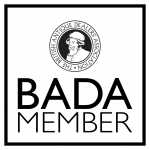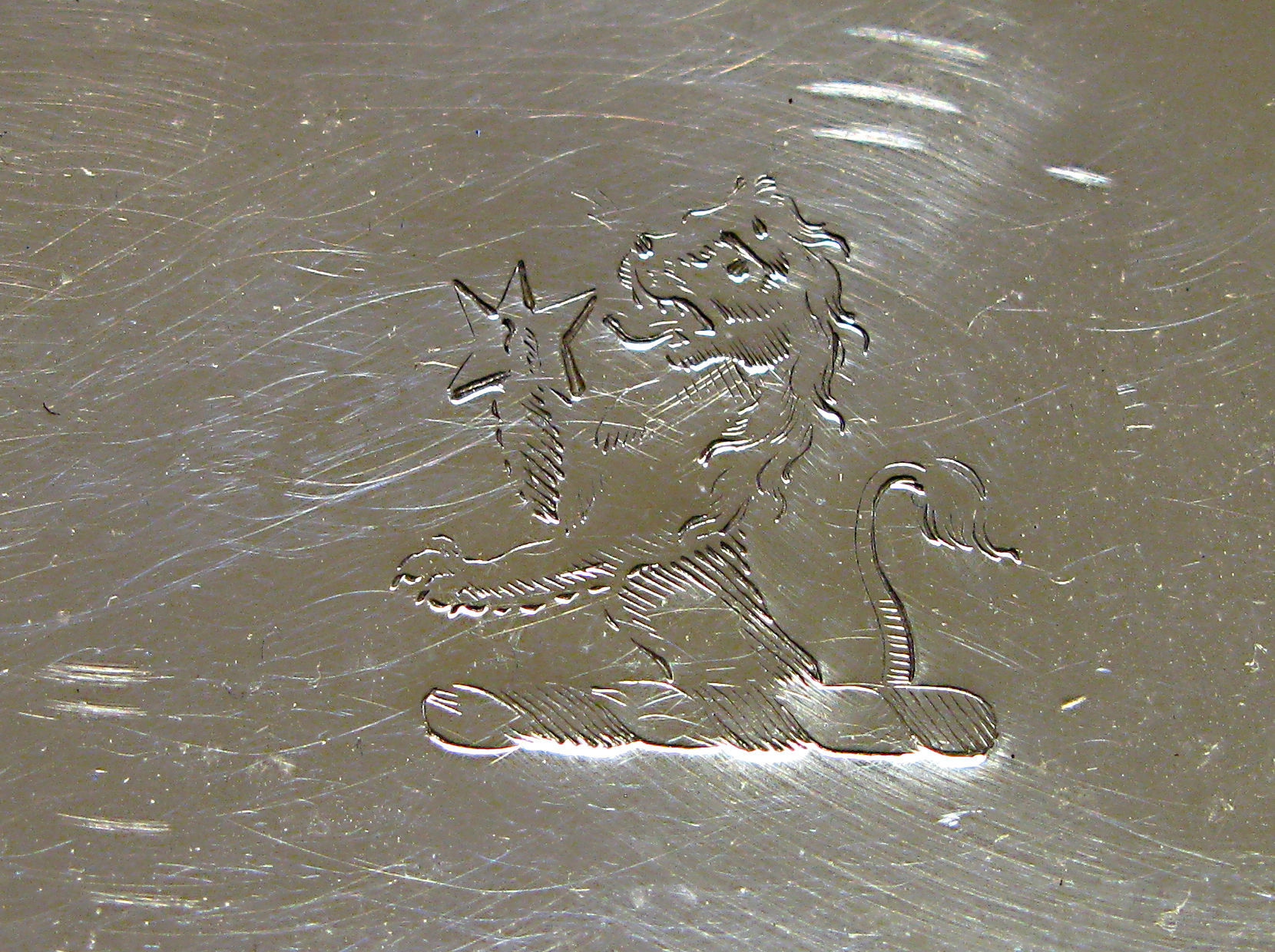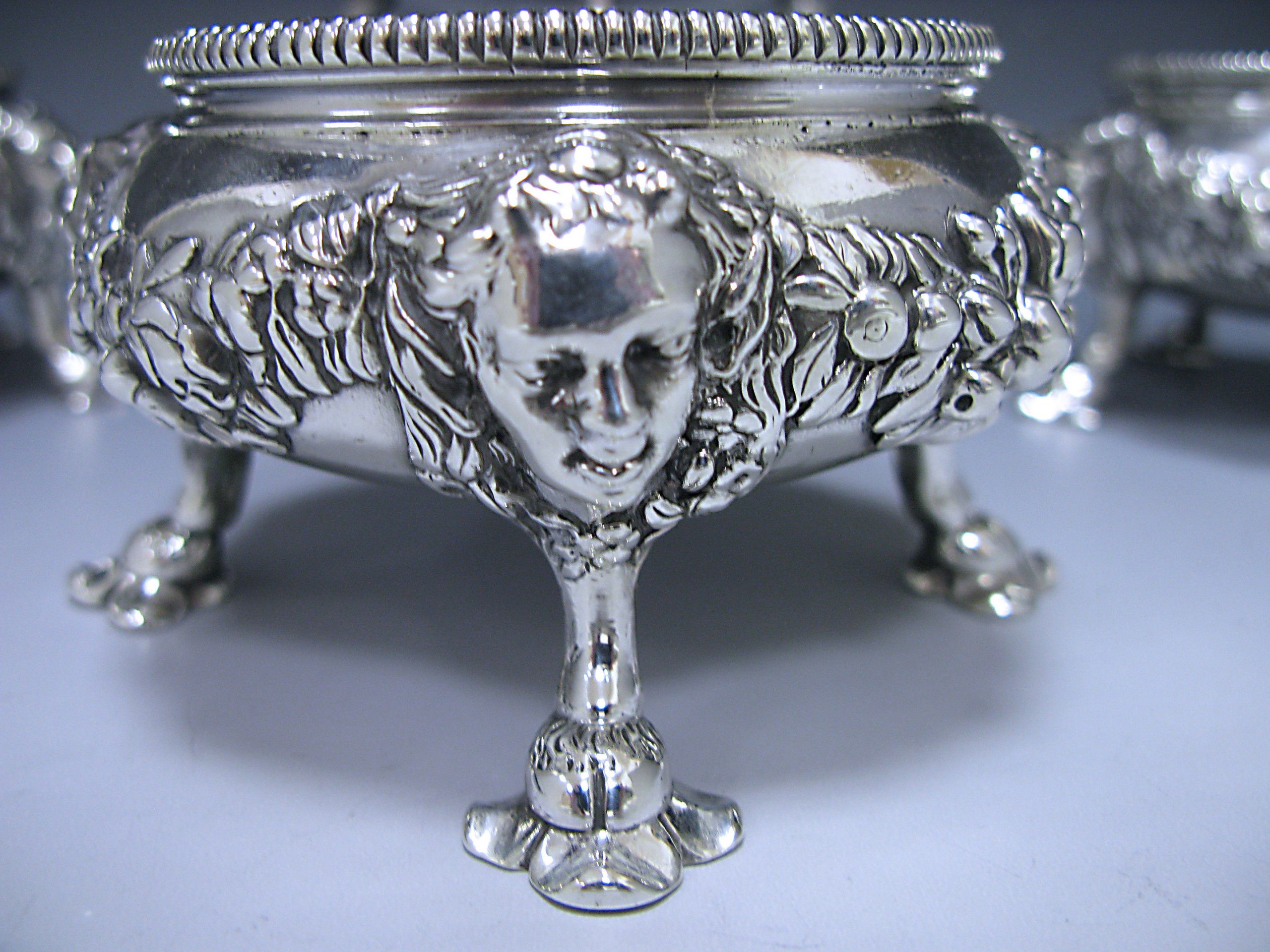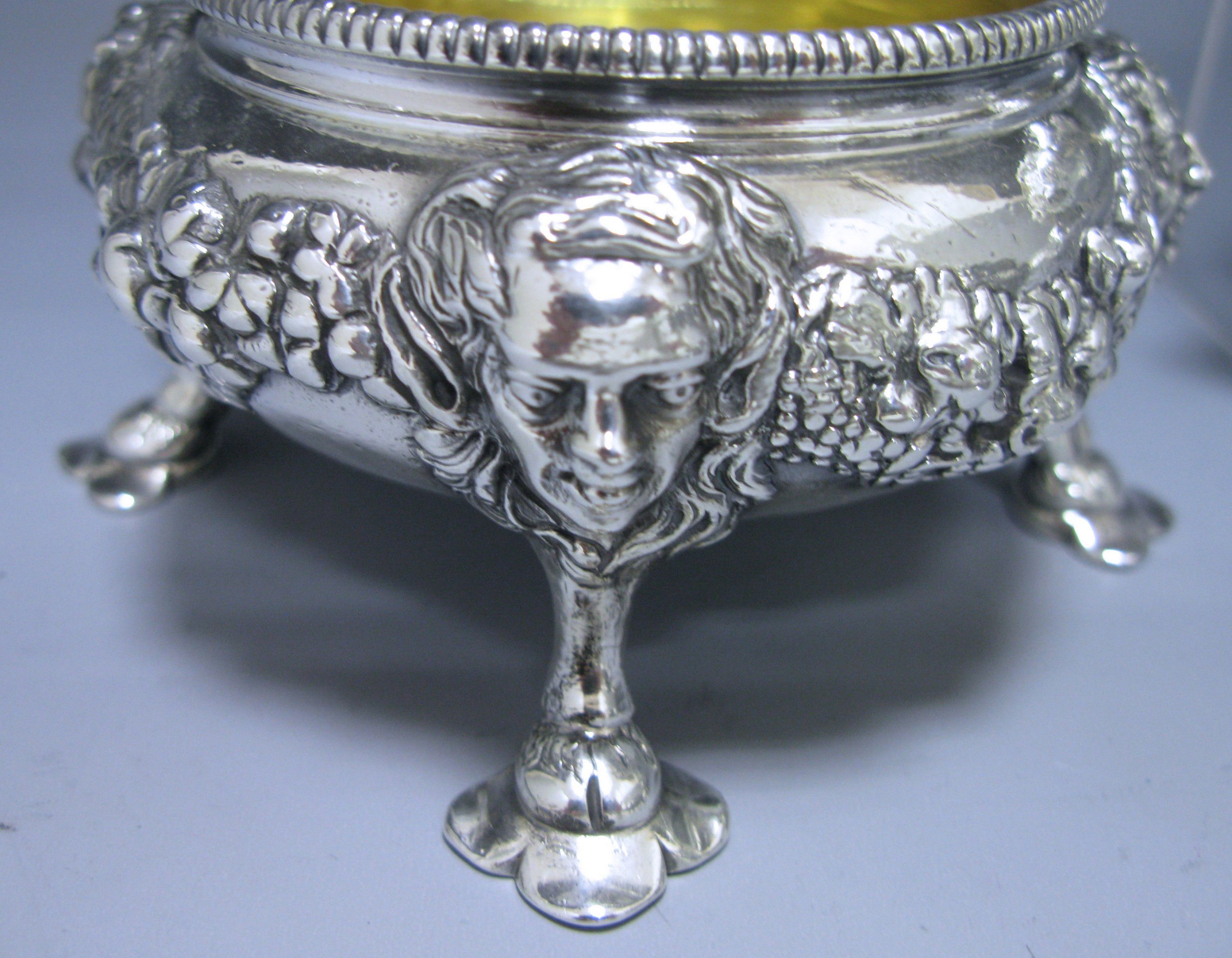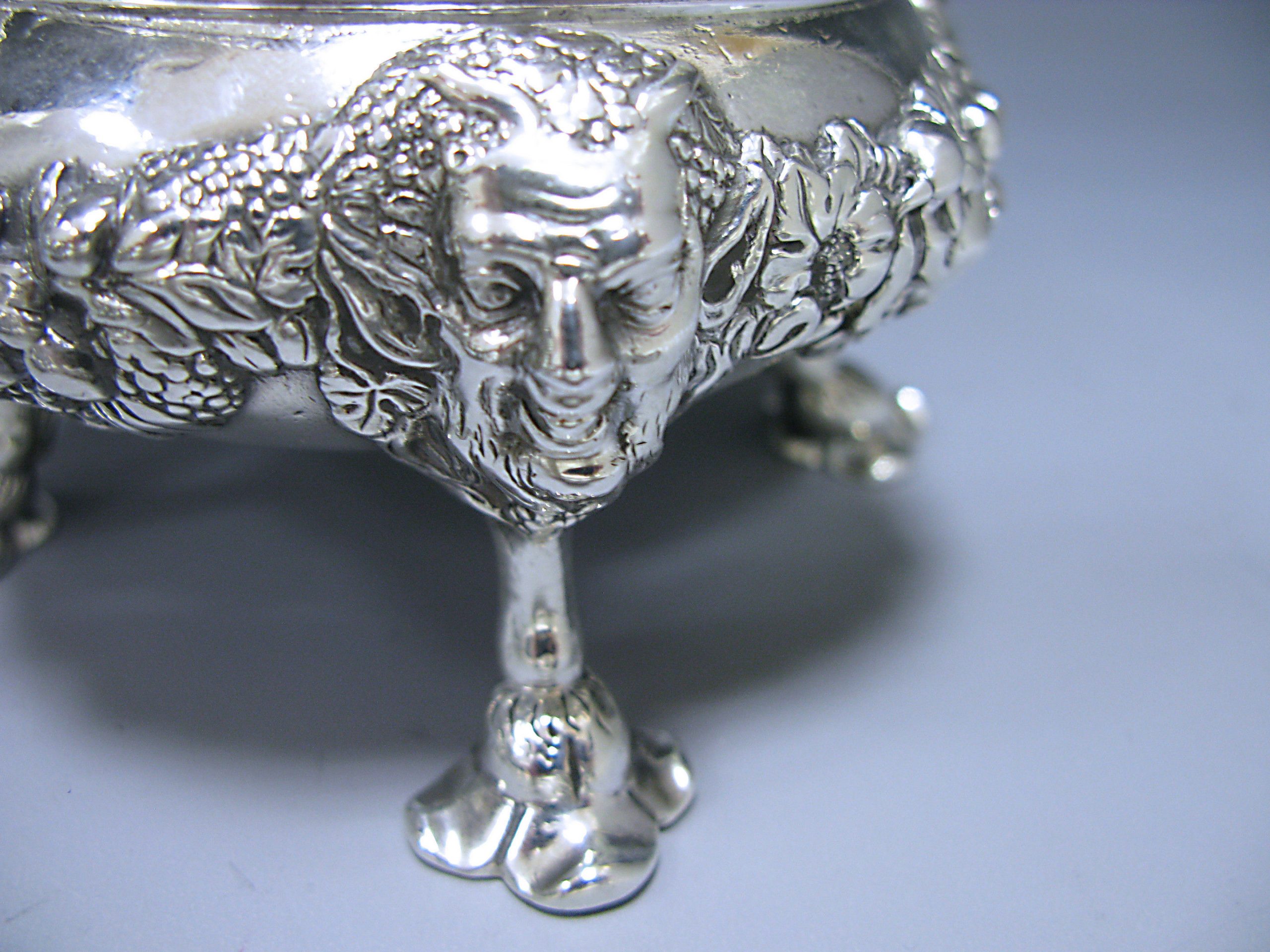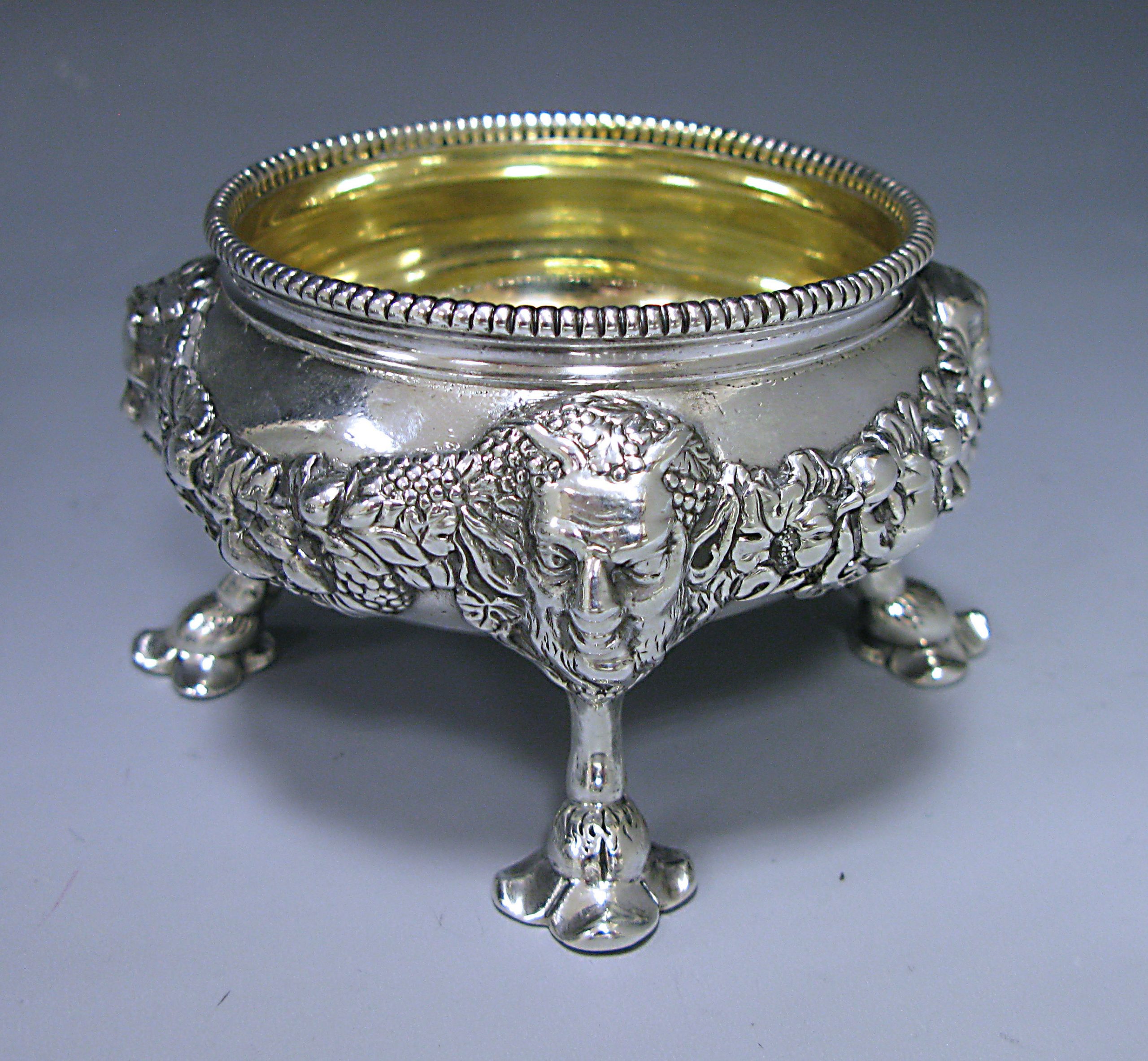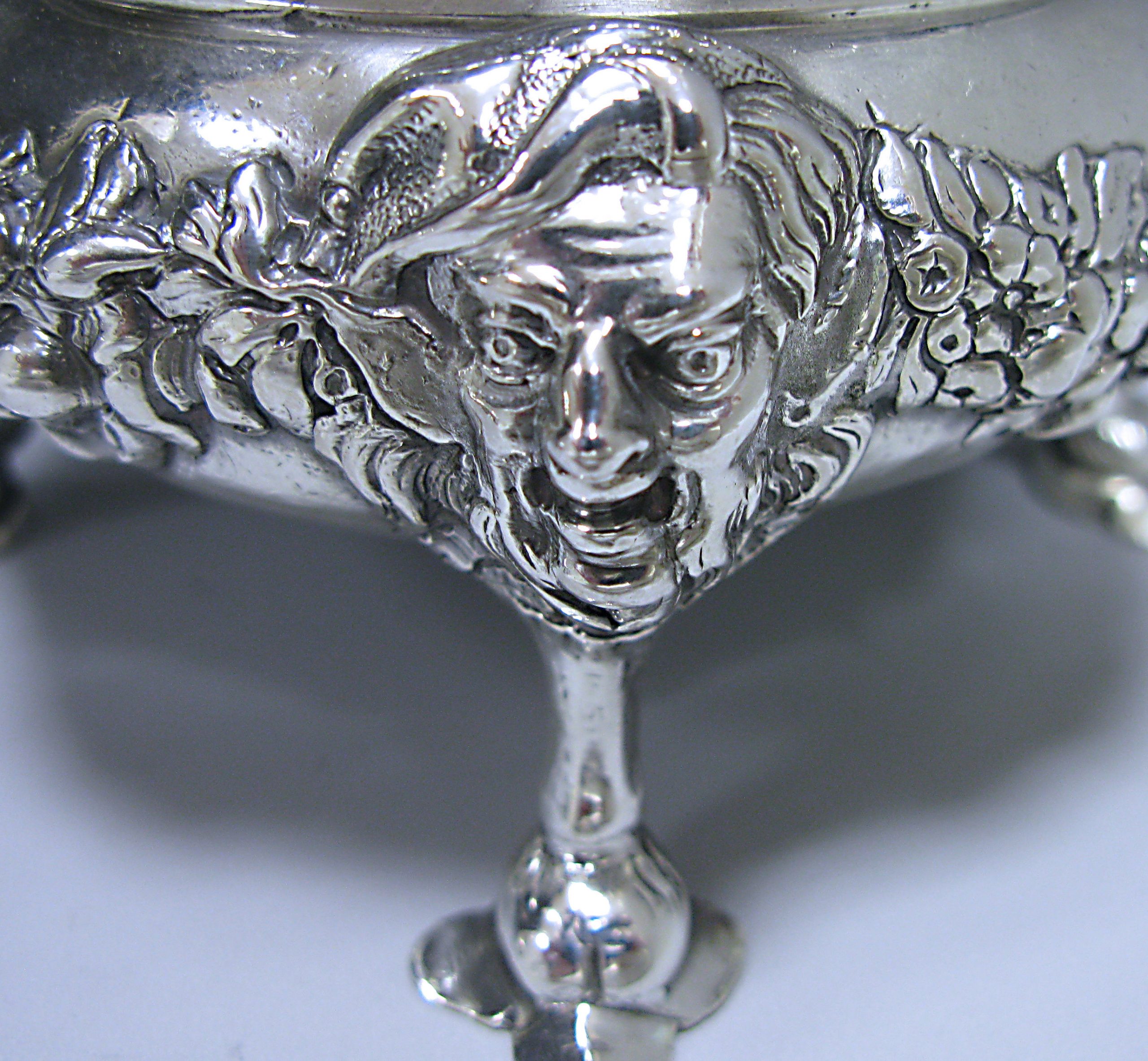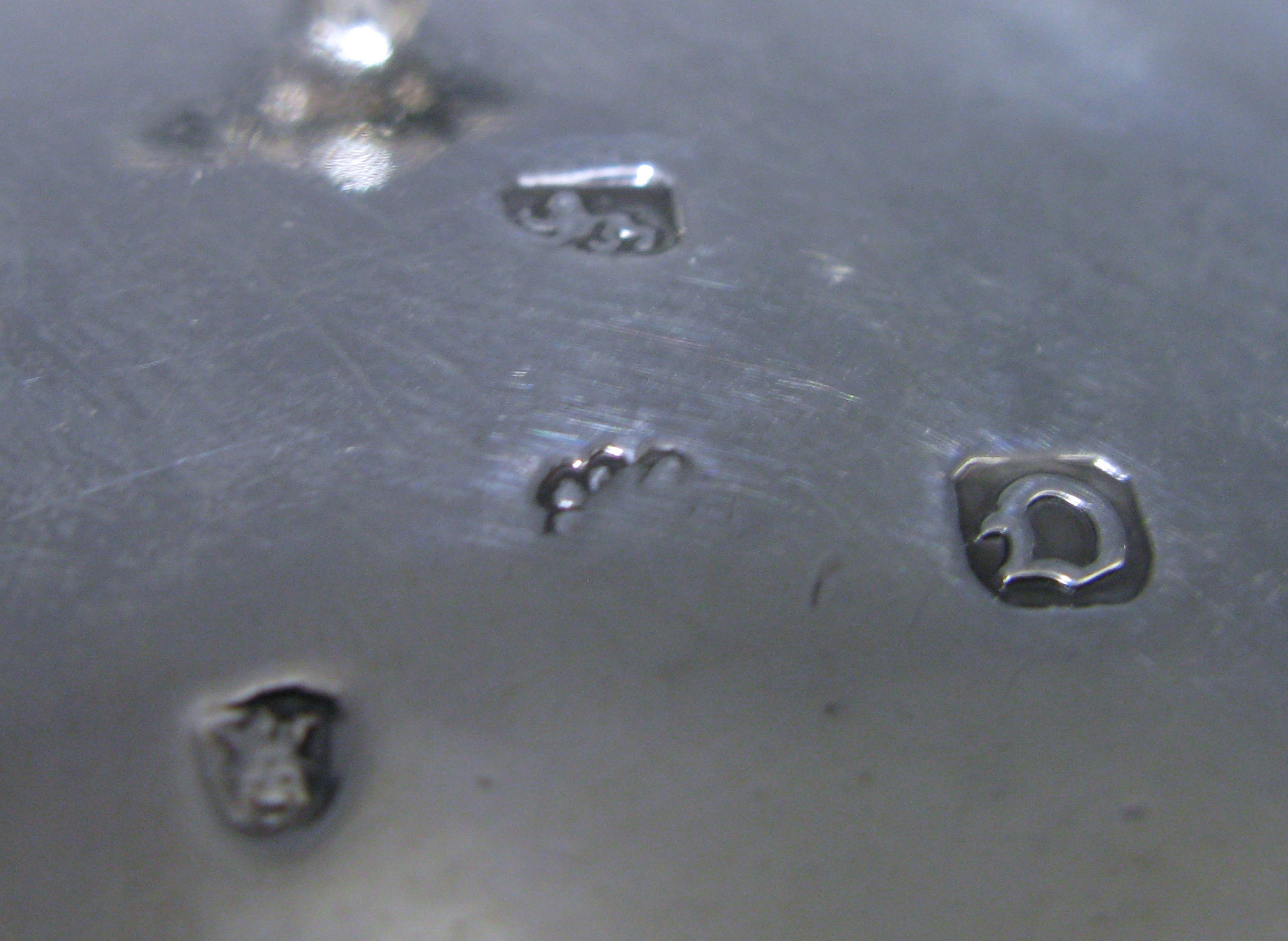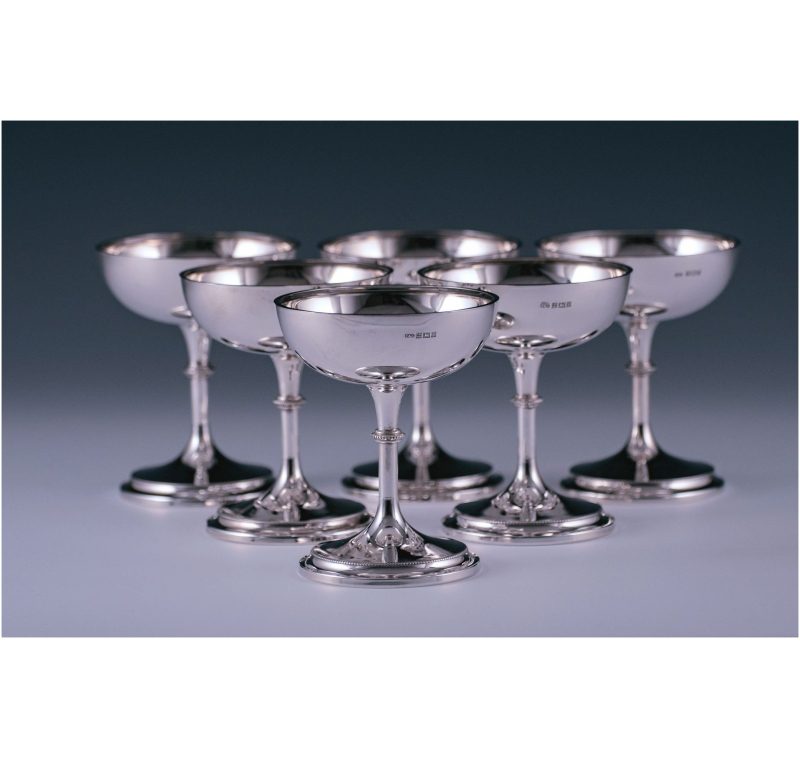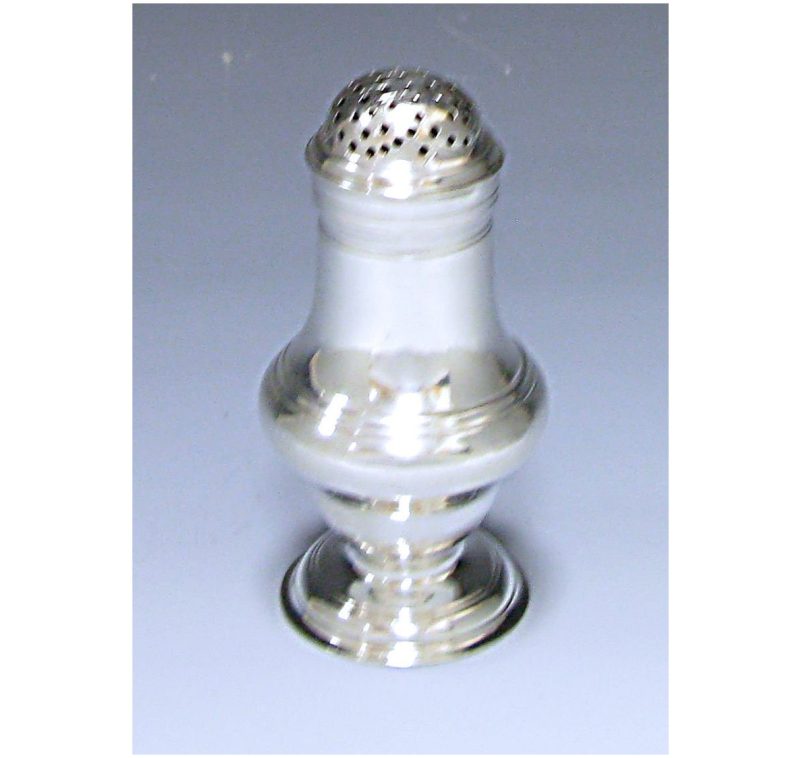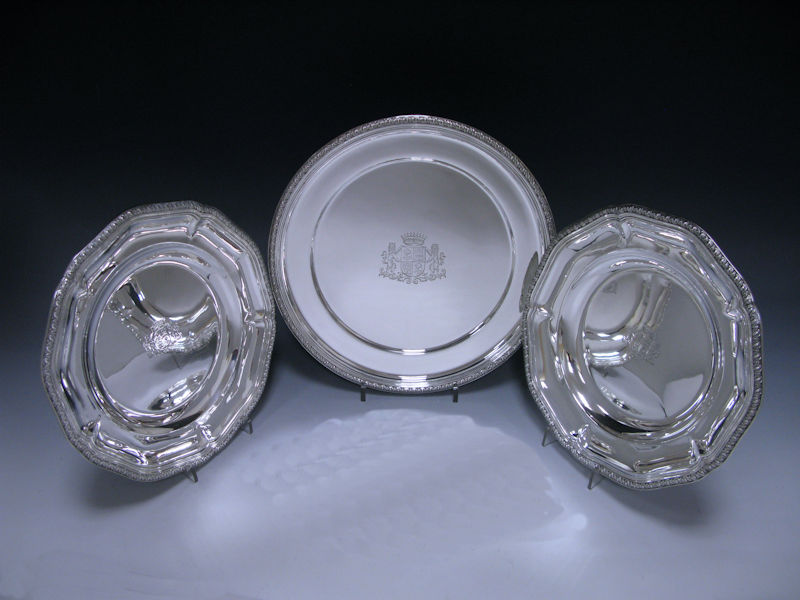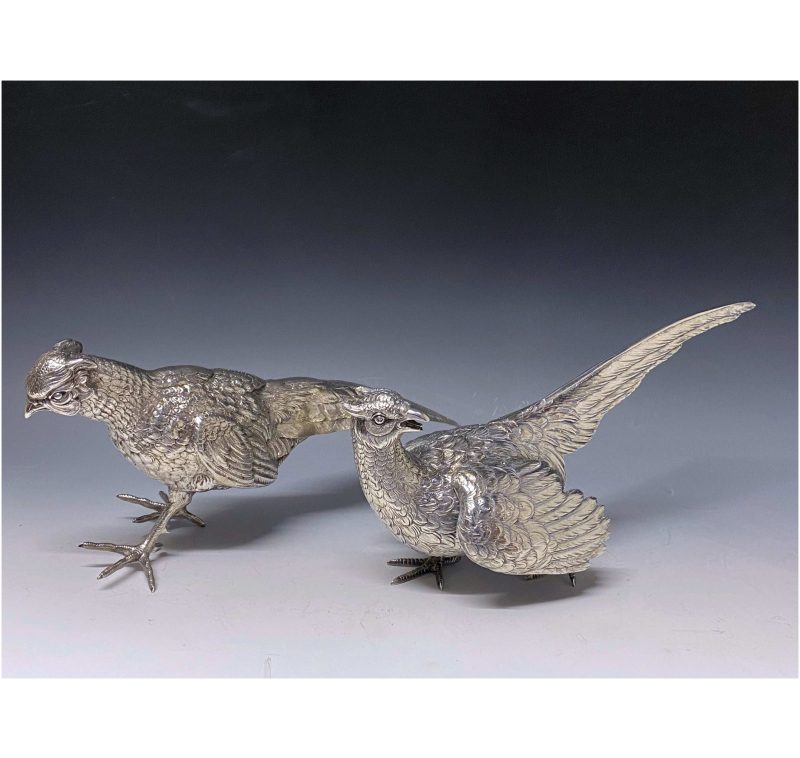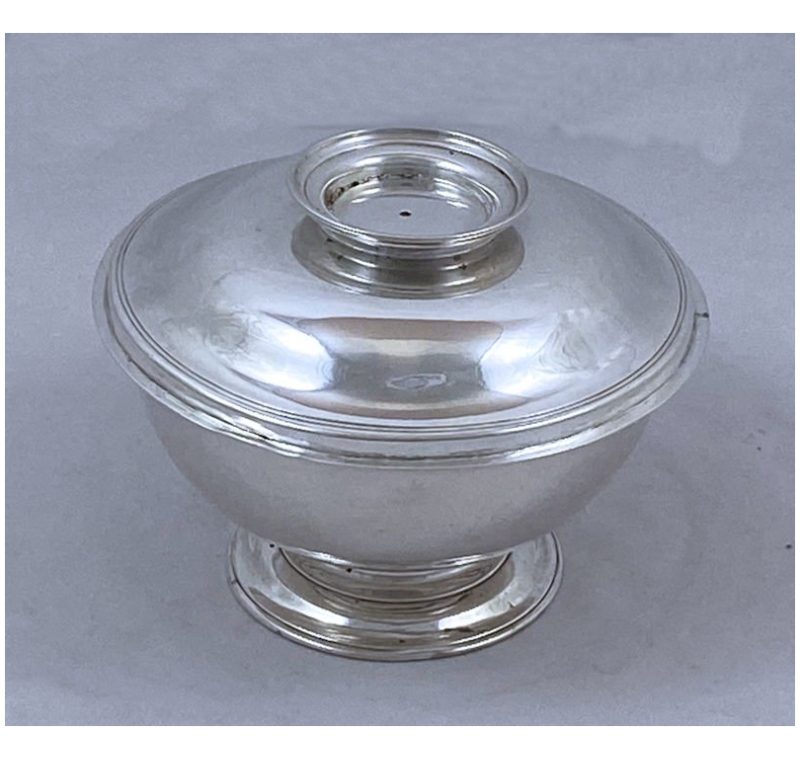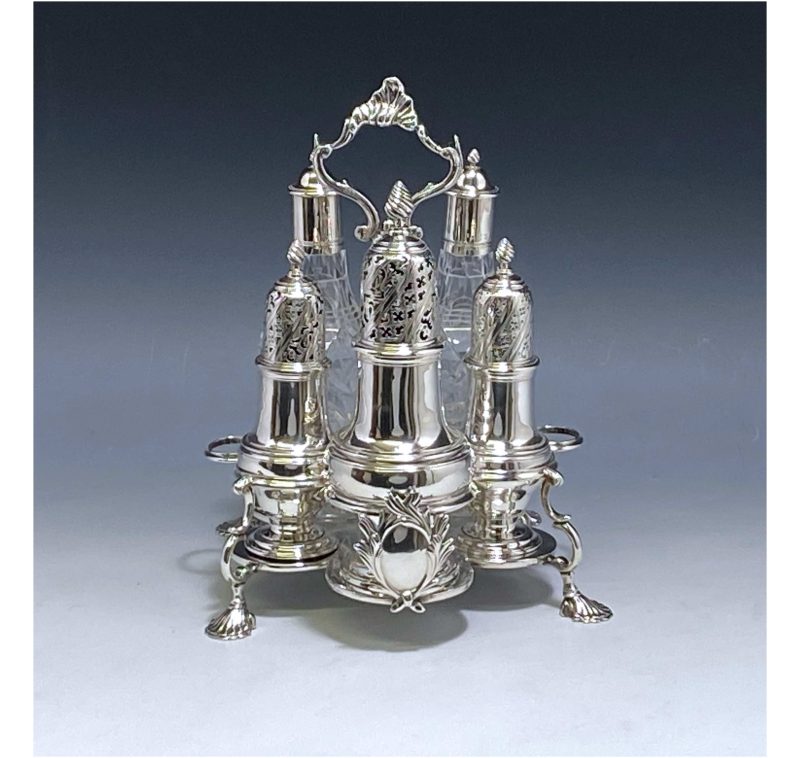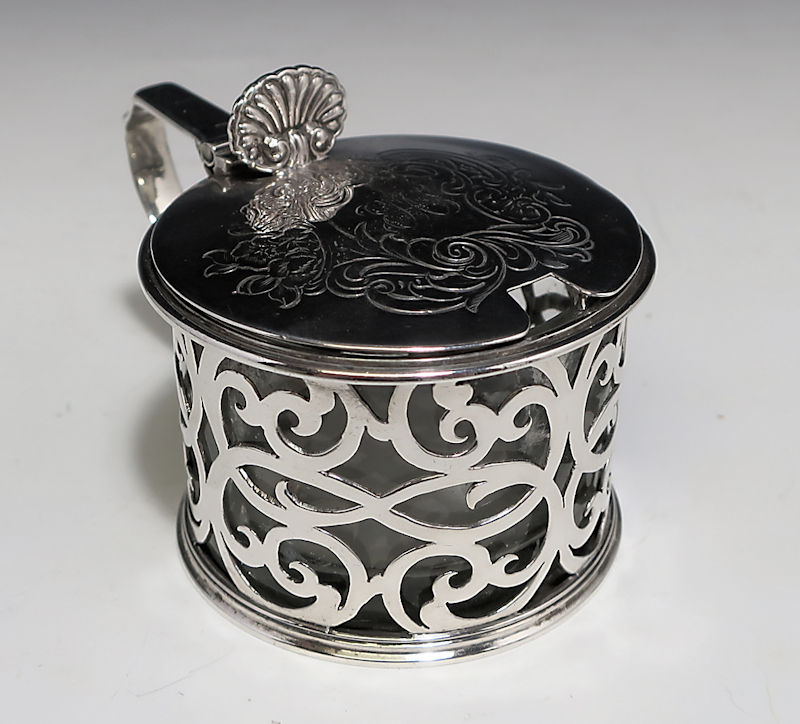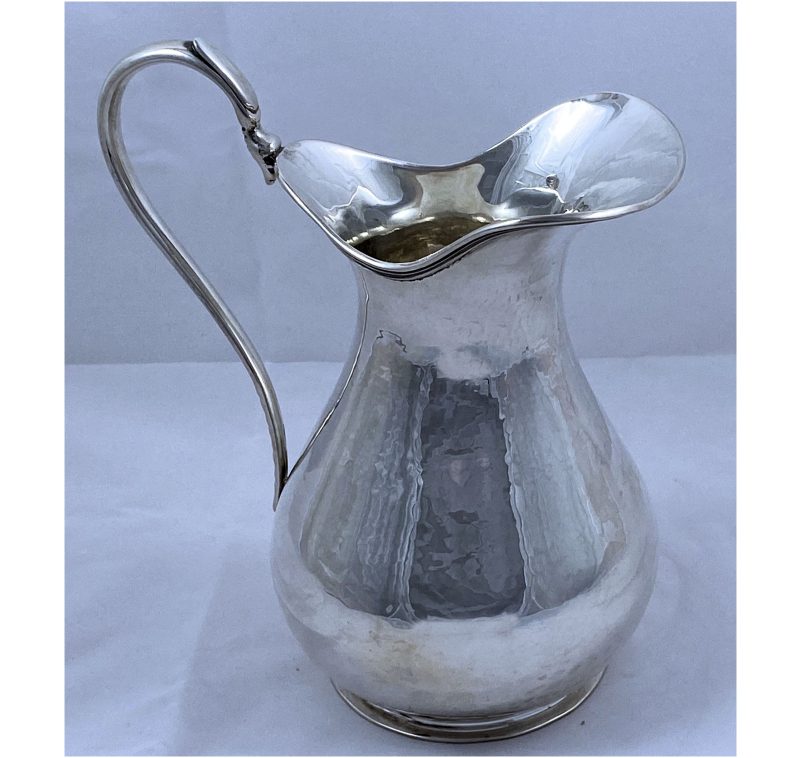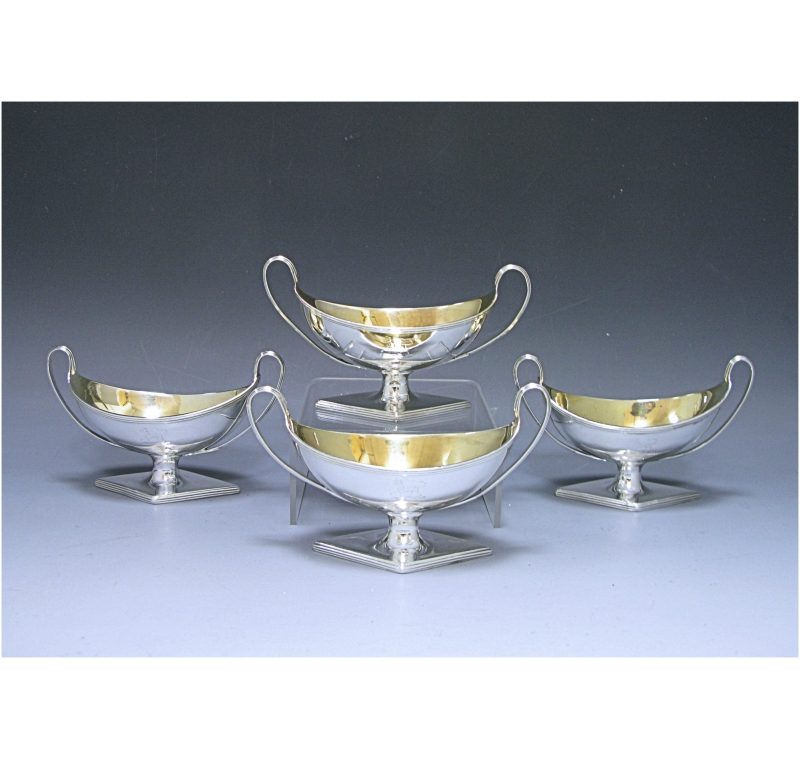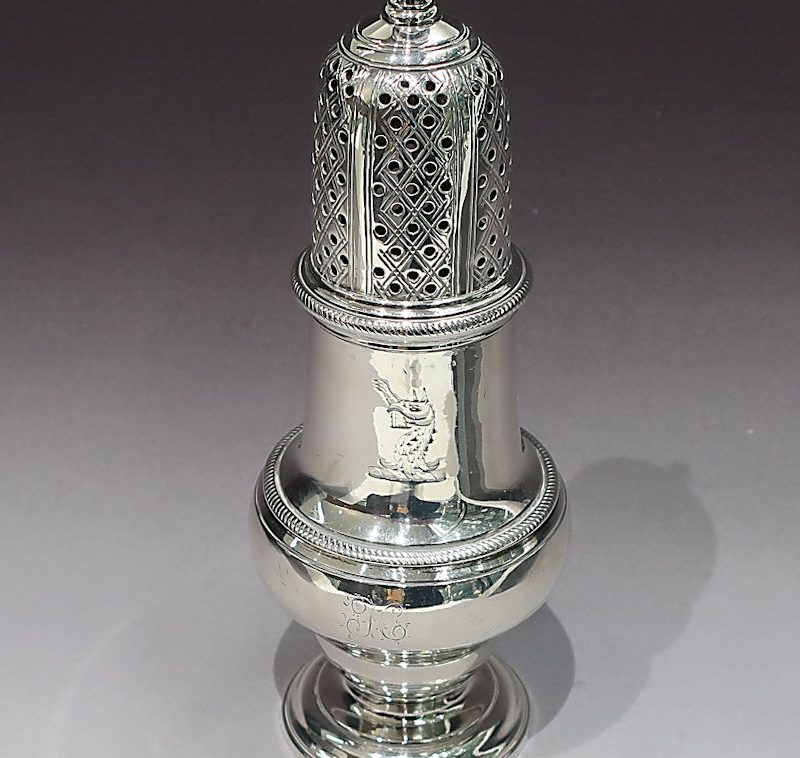Item Sold
A Pair of Antique Silver Salts made for the 1st Viscount Melbourne in 1769
Sold
A Pair of wonderful George III antique silver salts, which are of circular form.
| Date | 1769 |
| Made By | Parker & Wakelin |
| Location | London |
| Stock Number | W107x8 |

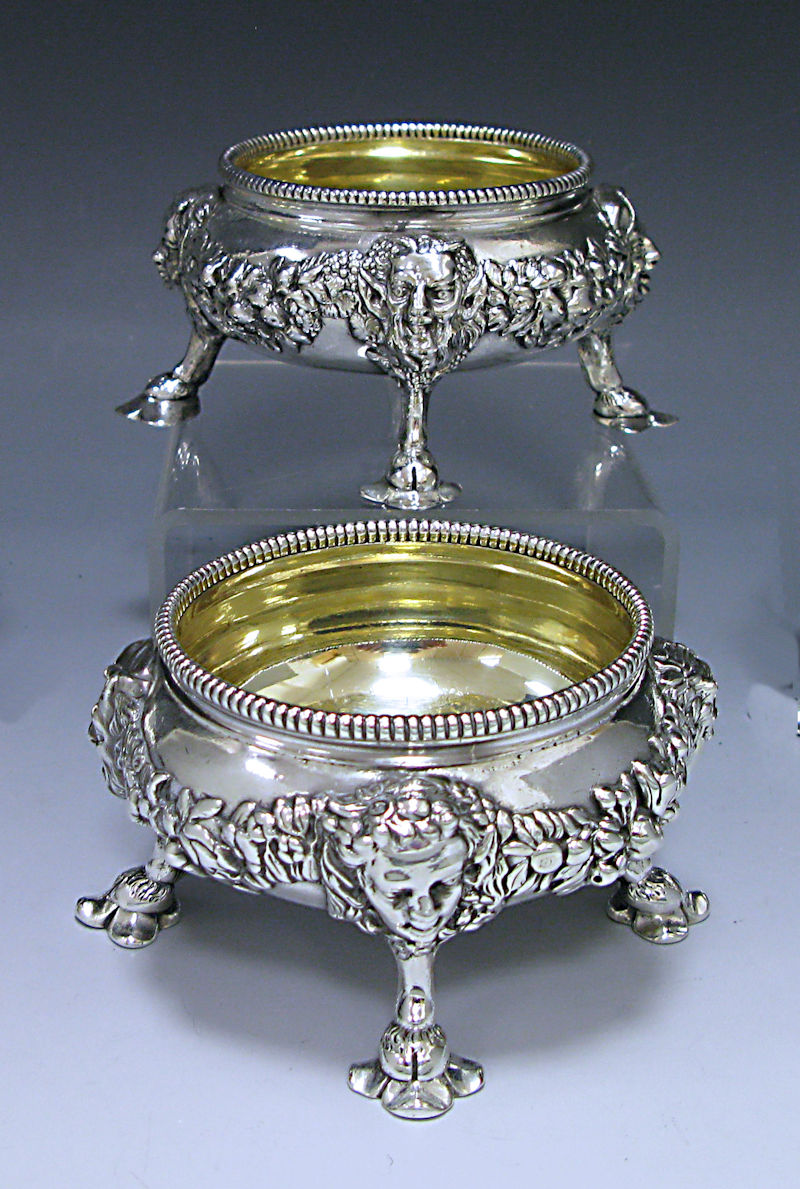
Added to basket
A Pair of Antique Silver Salts made for the 1st Viscount Melbourne in 1769
Out of stock
A Pair of wonderful George III antique silver salts, which are of circular form.
Each rococo-style salt has four heads of mythical gods or satyrs, which surmount the four feet (which in turn, culminate in three leaves). The heads are linked by swags of fruit and foliation.
The salts have gilt interiors which are engraved with the crest of Sir Matthew Lamb.
They are made by Parker & Wakelin of London in 1769.
The firm of Parker & Wakelin were the foremost silversmiths in London for much of the 18th century; supplying royalty, aristocracy and gentry, with both domestic and ceremonial plate.
The salts have gilt interiors which are engraved with the crest of Sir Matthew Lamb.
Dimensions: height 5.7 cm, width (at the rim) 7.62 cm
Provenance: Sir Matthew Lamb (1705-68) was the Grandfather of Prime Minister William Lamb the 2nd Viscount Melbourne, in office from 1835-41. He was Queen Victoria’s first Prime Minster.
The salts appear in the ledgers of Parker & Wakelin for the order date of Mar 26 1770, when one pair of salts were purchased and the four crests were engraved. These salts were once two pairs. This order was for Peniston Lamb, the 1st Viscount Melbourne (29 Jan 1745 – 22 July 1828), the son of Matthew and father to William.
Parker & Wakelin; Edward Wakelin, son of Edward Wakelin late of Uttoxeter in the County of Stafford, was apprenticed to John le Sage on 3 June 1730 upon payment of £21. He became free on the 7 September 1748. By the 2 November 1747 he had joined the famous George Wickes at Panton Street. Between 1747 and 1760, Wakelin’s surprisingly similar mark supplanted that of Wickes.
Wakelin took up residence at the Panton Street house, the lease being assigned to him in 1748. It is doubtful that he was truly in control of the business before 1752, as a Wickes and Netheron trade card was issued in 1750.
By 1752, Wickes had put down money on a manor close to his birthplace of Bury St. Edmunds in Suffolk and some agreement must have taken place. The formal date of the hand over to Wakelin, and his new partner, John Parker I was dated 11 October 1760, but probably occurred late in 1759. The actual date of commencement of Wakelin’s partnership with John Parker I was entered in the missing Goldsmiths’ Register but must have been between 1758 and 14 December 1761 when a new mark was entered. In the new mark, Parker’s initials appear above Wakelin’s, suggesting that he became the senior partner at this point. The partnership continued until 1777 when the venture between John Wakelin, Edward’s son and William Taylor commences. Heal duly records Wakelin alone as a Goldsmith, Panton Street, 1747 – 66 and Parker and Wakelin, King’s Arms, Panton Street near St. James’, Haymarket, 1759 – 77.
Edward Wakelin was a man of extraordinary business acumen. He bought into an established business and possessed the ability to ensure its continued success. He did so not just by employing assuredly talented, although sadly mainly anonymous silversmiths at Panton Street, but also by outsourcing what he was unable to make either at home or at the King’s Arms. Some names of the men who worked in this manner for Parker and Wakelin are recorded in the Workmen’s Ledgers, now in the possession of the Victoria and Albert Museum. Two such makers are James Ansill and Stephen Gilbert. Whilst their work was obviously of high quality, neither entered a mark for the period they worked with Parker and Wakelin.
Stephen Gilbert and James Ansill were both apprenticed to George Wickes after coming to his house as servants, and then continued to work for him. They grew up in villages next to each other. They remained friends, living and working together, probably in the Wickes/Wakelin workshop in Panton Street, where the ledgers give their address. Their output was considerable during the short time they worked as partners: 17,837 ozs in 1767-8 and up to 29,780 ozs in 1772. The partnership was definitely over by 1776 when Heal reports him alone at Panton Street. On 17 July 1780, Stephen Gilbert entered a mark in partnership with Andrew Fogelberg that continued until 1793.
There is no mention of the retirement or death of John Parker I, although it can be assumed that he retired or dies during 1777. Edward Wakelin retired in 1777 to Mitcham in Surrey, where the March issue of The Gentleman’s Magazine records his obituary: “At Mitcham, Surrey, Mr. Edw. Wakelin, formerly a Goldsmith in Panton Street. Died Feb. 1784.”The firm of Parker and Wakelin were probably the most important Silversmiths during the 1770’s and 1780’s supplying the Royal family ,the aristocracy and the gentry.
We provide worldwide postage/shipping and everything is fully tracked and insured. Purchases will be sent via Royal Mail Special Delivery, FedEx, Parcel Force, A-Z couriers; other delivery providers may be used in extenuating circumstances. We deliver to the address provided at the time of purchase but not to PO addresses, as a signature is required upon delivery.
Some countries levy import duties and local taxes. Payment of these is the purchaser’s responsibility and beyond the control of William Walter Antiques Ltd. When the container has reached the destination country, a customs representative will contact you for payment prior to delivery.
Import restrictions are applicable to some destinations, especially the import of products containing materials such as ivory and tortoiseshell. We cannot accept orders requiring shipment to any countries which implement such controls.
All items are checked and photographed prior to packaging, and we aim to dispatch 1-3 days after receiving cleared payment.
Delivery Charges:
For the UK £15.00
For Europe £30.00
For the rest of World £50.00
The charges are subject to change
At the heart of William Walter Antiques is our dedication to providing our customers with beautiful silver of supreme quality, which celebrates all that is precious about sterling silver. Customer service also being paramount, our long-standing, devoted staff team go above and beyond the call of duty for all our clients. We believe it is this combination of passion and commitment that has kept our customers with us for many years.
We accept credit/debit cards or bank transfer. Please submit an enquiry below or contact us on:
Phone Number
+44 (0) 207 242 3248
Email
info@williamwalter.co.uk
Visit us at the London Silver Vaults
William Walter Antiques,
London Silver Vaults,
53-64 Chancery Lane,
London, WC2A 1QS
Opening Hours
Mon – Fri: 10:00 – 17:00
Sat: 09:00 – 12.30

